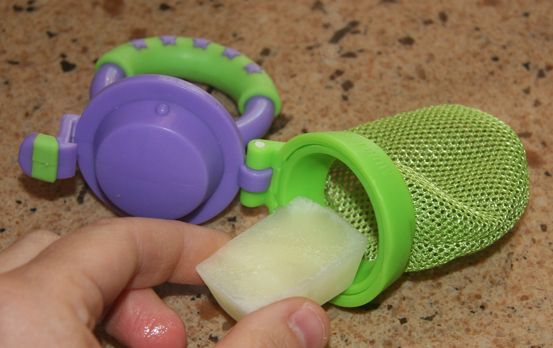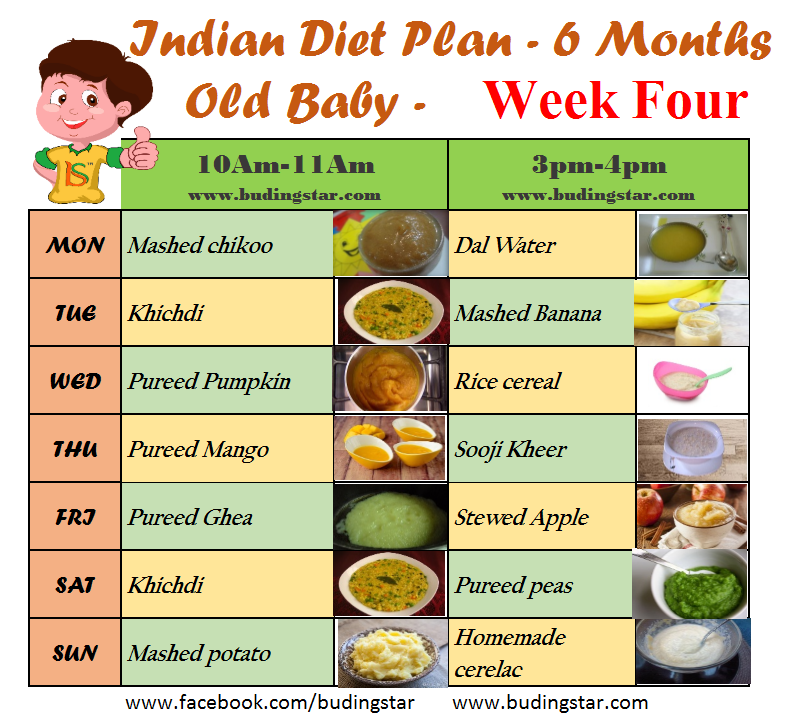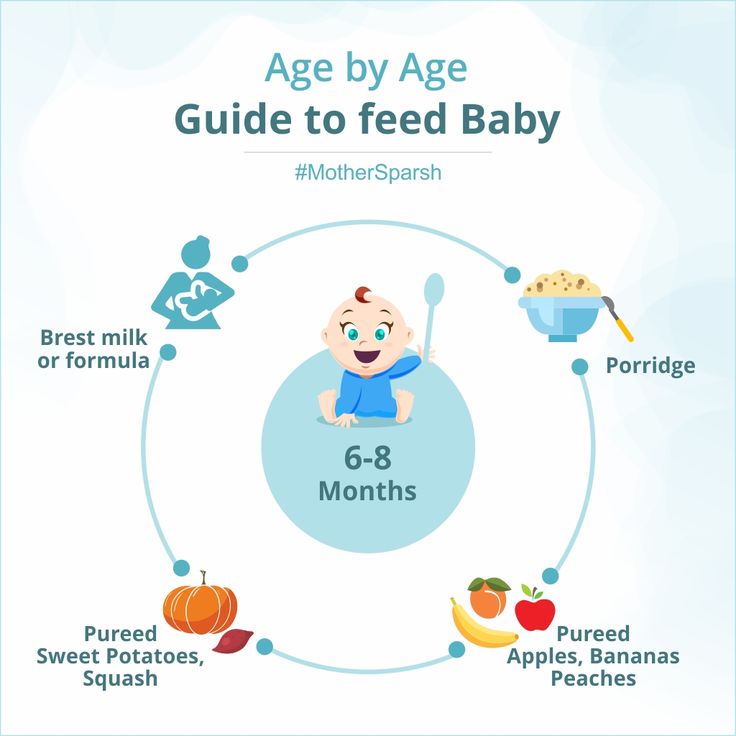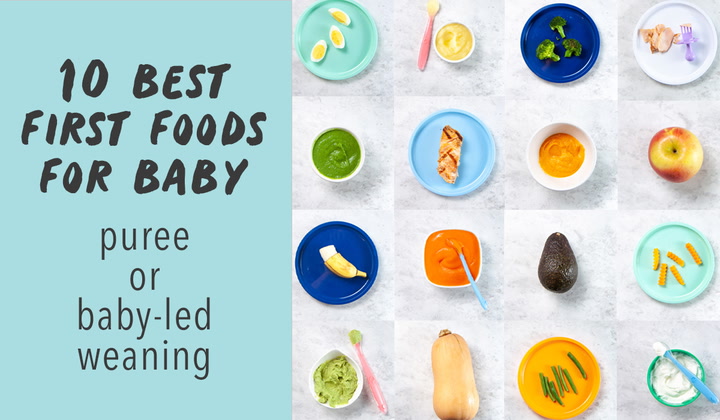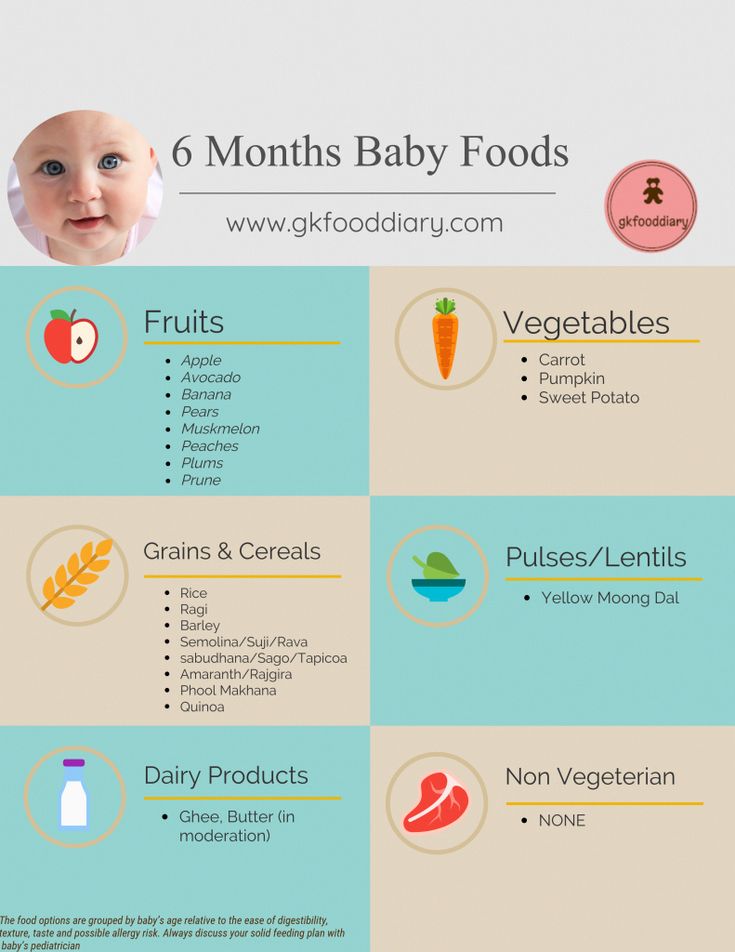Frozen foods for teething babies
7 Tips And Tricks For Teething
Nothing is worse than a teething baby! It is heartbreaking to see your little one in pain. Although teething doesn’t last forever, I swear it sometimes feel like it does; especially when they are getting their teeth in one after another. Here are 7 tips and tricks for teething to save your sanity and soothe your little’s sore gums!
Frozen Wash Cloth- Take a cheese cloth (if you want to go organic) or just a plain old wash cloth and get it wet. Ring it out and place it in your freezer. After 30-45 minutes, the cloth will be frozen. Hand it to that baby and let them go to town! They will love it.
Teething Toys- They make teething rings that you can freeze if you like, or check out some of the plush teething toys they make now as well. Try out a few different styles of toys to see what your kiddo prefers.
Frozen Banana- Freeze and whole banana and then give it to your child for a sweet treat that will soothe those gums. You can give it to them plain, or you can also put it into a food feeder like this one. This is my favorite teething trick. Not only does it help keep baby happy, but it’s nutritious as well.
Carrots- Another nutritious option is to let your kid chomp on a carrot. DON’T use a baby carrot. We don’t want any choking incidents. Instead, get a large carrot that your child won’t be able to break off or bite off. Peel it, wash it and let them have it. This is another one that is good to put in a food feeder just in case!
Teething Biscuits or Bagels- Try making a homemade teething biscuit like this one to let your baby munch on. Again, it will give them a nutritious snack but it will also help those chomps that are coming in. If you don’t feel like whipping up a batch of biscuits, a refrigerated bagel will work just as well! Plus, your child will love you. Because, let’s be honest… who doesn’t love bread?
Frozen Bottle- Another great frozen option is using your baby’s bottle.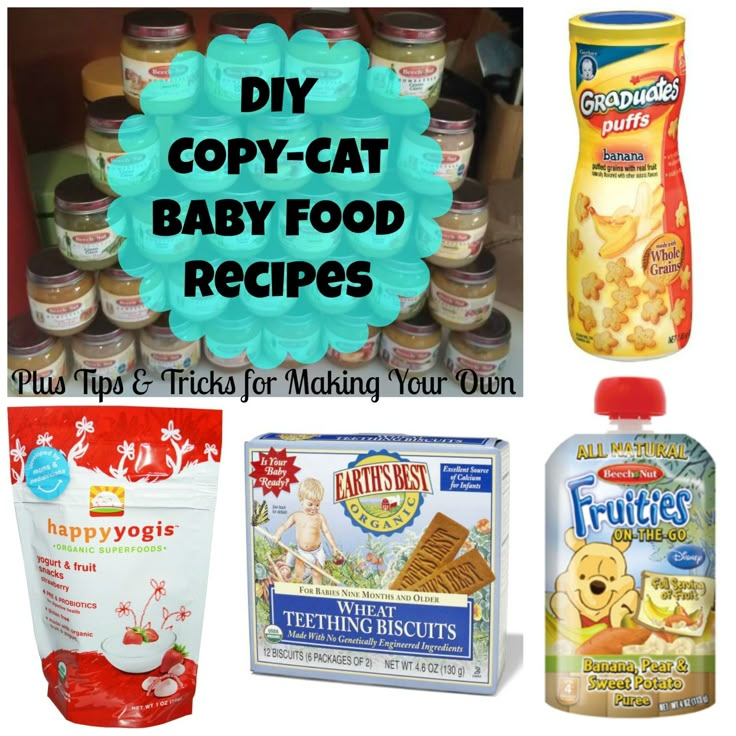 Freeze milk, juice or water in the bottle upside down. That way, the liquid is frozen in the nipple of the bottle. When it is frozen, your child will be able to chew on it and allow it to soothe their gums.
Freeze milk, juice or water in the bottle upside down. That way, the liquid is frozen in the nipple of the bottle. When it is frozen, your child will be able to chew on it and allow it to soothe their gums.
Acetaminophen- Tried and true. When all else fails, talk to your pediatrician about using acetaminophen to help your child be more comfortable. Dosing amounts have recently changed, so please speak with your doctor before administering any medicine.
If at all possible, avoid mouth and gum numbing gels. While they may provide temporary relief, it also increases choking hazards because of the decreased gag reflex it induces.
There are a bunch of different ways to help your baby through the pain of teething. Try a few different ones to see which your child prefers.
What are some of your teething tricks?
**Stephanie writes for RADmomCOOLkid. Check out more of her posts here.
Frozen Treats for Teething Babies — Fortified Family
Frozen Treats for Teething BabiesKatie Ferraro
This is not a sponsored post.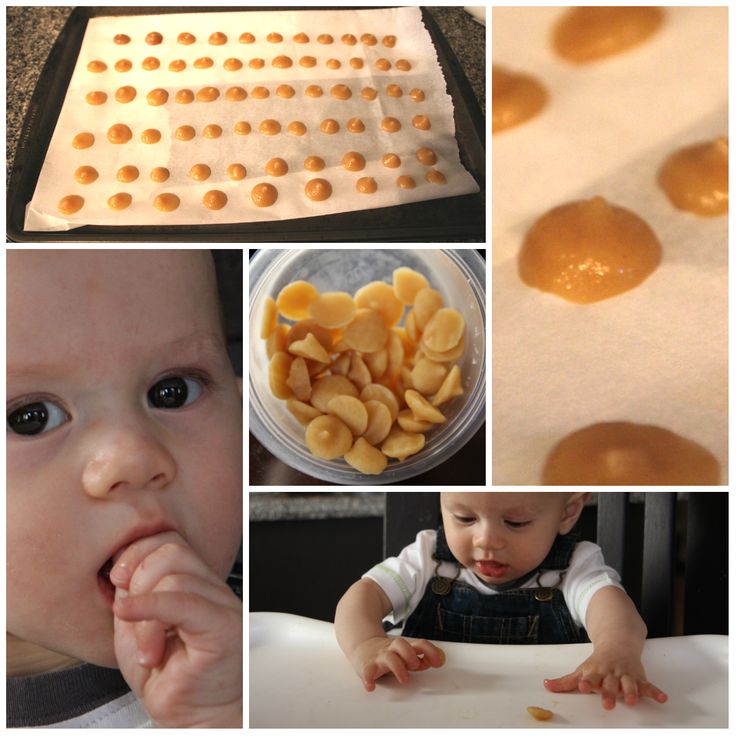 The post does contain affiliate links and the modest income I receive from these affiliate partnerships helps me offset the cost of running this site.
The post does contain affiliate links and the modest income I receive from these affiliate partnerships helps me offset the cost of running this site.
Oh No: Teething Time
If there’s one thing I don’t like about babies, it’s when they’re cutting teeth.
Teething messes EVERYTHING up: nap time, milk feeds and the new solid food schedule you’re probably just adopting!
Now your baby might be developing his first teeth anywhere along the infant spectrum. Some babies are born with teeth (weird, I know…but it’s true) and other babies might not get their first tooth until after their first birthday.
Both of those are outlier situations - but there’s no rhyme or reason about when a baby gets teeth.
It’s also important to note that having teeth is not a pre-requisite for starting solid food…so don’t let the lack of teeth hold you back from getting started with baby’s first bites!
Signs of Teething
You probably don’t need a medical degree to know when your baby is teething.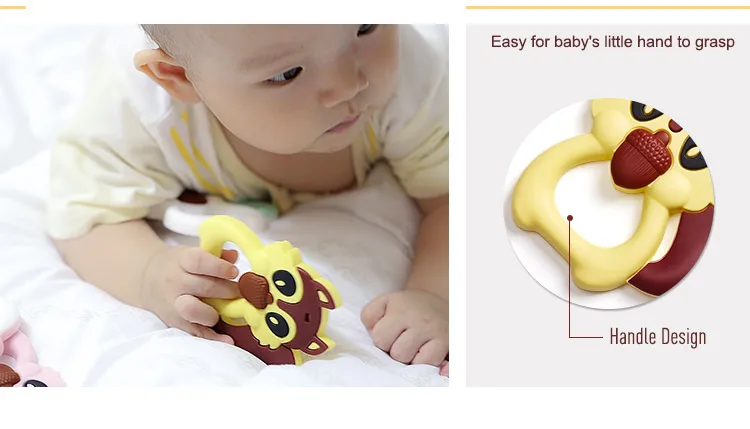
You can usually tell SOMETHING is up.
Side note: teething might actually be MORE uncomfortable for parents and caregivers than it is for some babies - because not all babies are bothered by teething.
But here are some signs to look out for during teething:
More drool from babies than usual
Area around tooth may be swollen and tender
Temperature may rise slightly
When it comes to the temperature thing - a 2016 Pediatrics review found that although temperature might rise during “primary tooth eruption” - but it’s usually not to fever levels. Since true fever is not usually associated with teething it may instead be a sign of illness or infection, so be on the lookout for that.
And about all that drool…excess drool can lead to rashes around the mouth and changes in your baby’s diaper. Sometimes these two side effects of teething actually get blamed on feeding.
Keep in mind that your baby is trying new foods and textures and possibly potential allergen ingredients during the same time he or she is teething.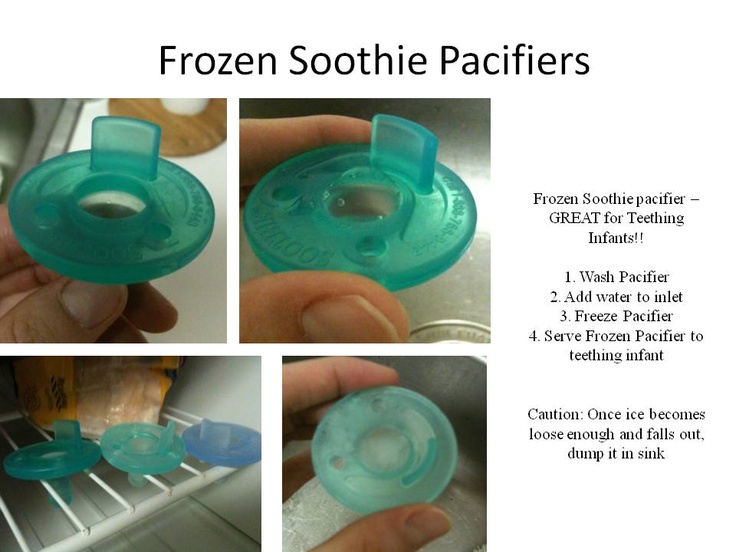 What “might” seem like a reaction to a new food (rash around the mouth or changes in the diaper) may in fact be due to excess drool and saliva associated with teething.
What “might” seem like a reaction to a new food (rash around the mouth or changes in the diaper) may in fact be due to excess drool and saliva associated with teething.
Interventions for Teething
You can’t really stop the process of teething, so it may give you peace of mind to know there’s not a whole lot you can - or should do.
But if you feel the urge to give your baby a break, here are a few interventions for teething to consider:
Medication - ask your doctor about weight-appropriate doses of acetaminophen (Tylenol) for 6 month+ babies or ibuprofen (Advil or Motrin).
Don’t offer remedies that include the plant poison belladonna, gels with benzocaine or amber teething necklaces (the FDA advises against teething necklaces because of choking hazard & the AAP backs up claim that they are not supported by science).
Chew toys - plastic and rubber toys are good for aching gums (…but then again the AAP also recommends against BPA in hard plastic, go figure).

Massage - you can gently rub or massage your baby’s mouth / gums, but make sure to wash your hands first.
Sleep schedule - “try” to keep your sleep routine regular even when baby is teething; avoid disrupting the schedule to prevent further sleep troubles down the road.
Cold temperatures can also help - try damp washcloths that have been twisted and frozen but avoid teething rings that are frozen solid (they’re too hard for baby’s mouth and also present an opportunity for potential bacteria contamination).
Food Tweaks When Teething
Your baby does not need teeth to transition to solid foods.
But there are some foods that are a bit safer when babies are teething. Personally I like to hold back on the following foods until baby has 1 or more teeth poking through:
Corn on the cob
Chicken legs on the bone
More challenging raw vegetables like cucumber with skin and bell pepper strips
Some babies find frozen foods feel good on their gums, so try out frozen yogurt bites or cubes to suck on.
Chilled cucumber strips (with or without skin and/or seeds) work as well.
Frozen Yogurt Teether Treats
These frozen yogurt teether treats are one of my favorite foods to offer teething babies. This recipe idea is from the book “making mealtime ezpz: fun ways to fill the happy mat”. I adapted the recipe by adding yogurt and then putting the yogurt mix in my deviled egg dish because I didn’t have the freezer space for spreading it out on parchment paper. You could also do this in mini ice cubes too!
If you’re looking for really easy ways to make mealtime FUN - definitely check out the “making mealtime ezpz” book. It’s one of my favorite resources for food art and you can 10% off this book and all ezpz products with code KATIE10 - click link to check their products and the book out.
GET 10% OFF ALL EZPZ WITH CODE KATIE10
Frozen Yogurt Teether Treats Recipe
Ingredients
Instructions
Rinse strawberries and remove green stem / top of strawberries.
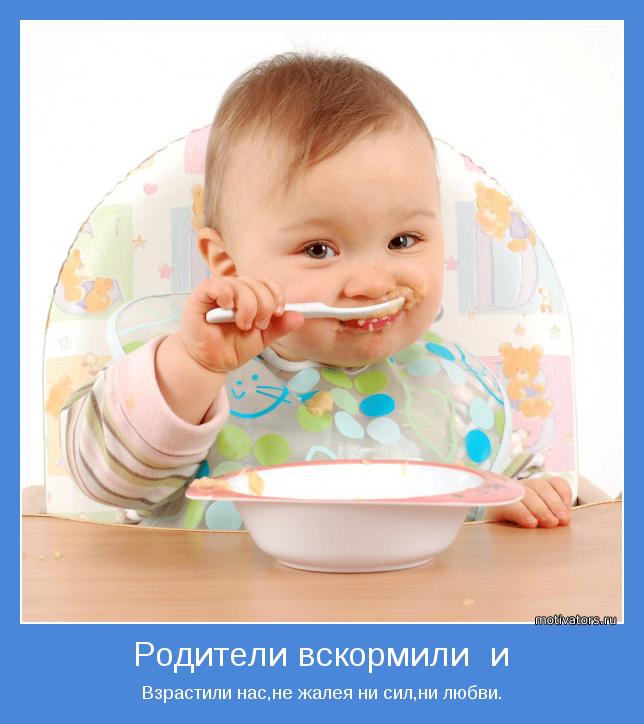
Combine hulled strawberries and yogurt in a blender and blend until liquid. Add additional yogurt or milk to achieve desired consistency.
Pour yogurt mixture into a zip-top bag, then snip the bottom corner and portion liquid mixture into deviled egg plate, food molds or ice cube trays. Freeze for 2 hours or until set.
If your yogurt mixture is a tad thicker you can also just portion it from the zip-top bag direct onto parchment paper. Mine was a little too runny to do this - which is why I opted for the deviled egg plate, which helped keep the spread contained!
Now I want to know…what’s your go-to M.O. when your baby is teething?!
0 LikesKatie Ferraro
Leave a comment
Katie Ferraro
@babyledweanteam
View posts by category
YOU MAY ALSO LIKE
"Eat the 8" Allergenic Foods for Babies
Putting More Plants on Your Plate
teething how to help a child
Teething is a phase that every baby goes through - some easier than others.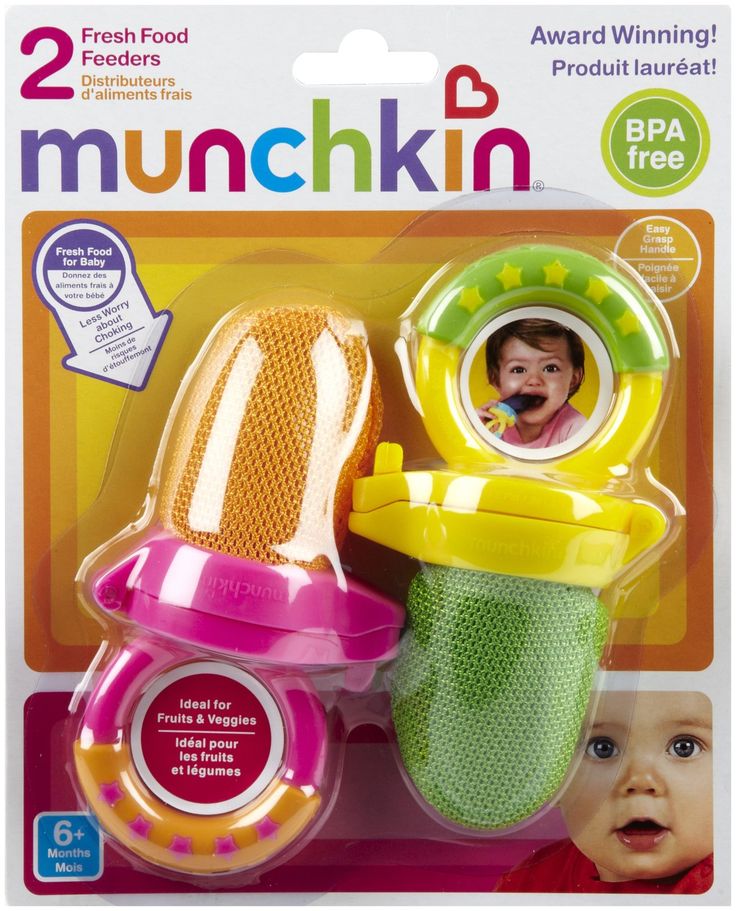 We have found 6 ways to relieve the pain of teething in a child.
We have found 6 ways to relieve the pain of teething in a child.
There is no way to avoid the inevitable with a teething baby. How to help a child? After all, it is painful for parents too - to see how your baby suffers from pain. Teething seems to take forever. We hope that our six little tips on how to help a child when teething will make this period more bearable.
Read also: The order of teething in a child (SCHEME)
1. Slingobus
Teething: how to help a child
When a child is teething, he becomes restless, and the mother often has to carry him in her arms. And if you do not know how to help your baby, especially when you are on the road, try wearing baby carriers. A child can scratch their teeth at any time. In addition, unlike teethers, which the baby often drops, they always remain clean.
Read also: My child is teething: how to help?
2. Frozen wipes
Teething: how to help a child
Something cold helps relieve pain during teething. Lightly dampen a clean washcloth, roll it up, and place it in the freezer. The next time you need to help your child cope with pain, give him a chilled tissue to chew on. The texture of the fabric will help teething, while the cold will freeze the gums.
Lightly dampen a clean washcloth, roll it up, and place it in the freezer. The next time you need to help your child cope with pain, give him a chilled tissue to chew on. The texture of the fabric will help teething, while the cold will freeze the gums.
3. Fun toys teethers
Teething in children: how to relieve pain
When a child is teething, he puts everything in his mouth. Replace your baby's regular toys with teethers. Funny little animals and various "noise makers" that you can also chew on will distract the child from his suffering. Remember to wash your teethers regularly.
Read also: 15 educational toys for children up to a year old that your child will definitely need
3. Teething remedy for children
Medicine for teething in children
In difficult cases, the situation can be saved by a medication during teething. However, you should not choose it yourself.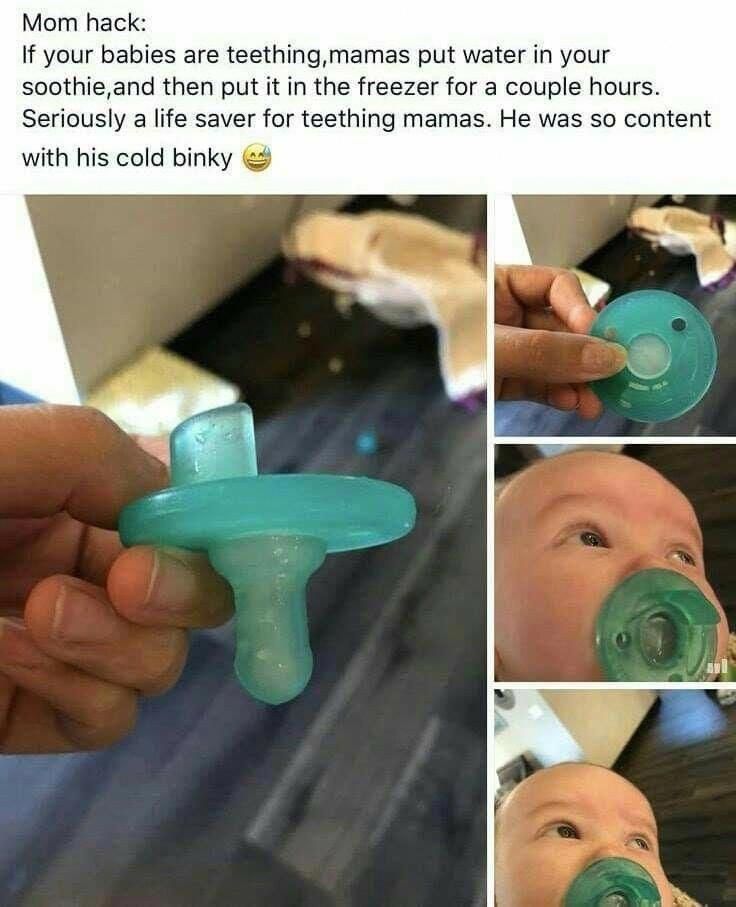 Always check with your pediatrician before offering your child any medication for teething in children and strictly follow the instructions.
Always check with your pediatrician before offering your child any medication for teething in children and strictly follow the instructions.
5. Frozen bananas
Teething: how to help
An excellent remedy for teething in children is frozen bananas or mangoes. Just cut them into pieces, put them in plastic containers and put them in the freezer. Offer them to your baby as soon as his teeth begin to bother him again by placing frozen fruits in a nibbler. Always be with your baby when you give him teethers or cold snacks.
6. Cold snacks
How to ease teething in a child
During the period of teething, you probably always have at hand (in your bag, in the car, in the nursery) there are "tooth" cookies. We suggest you take it to the next level and store cookies in the refrigerator. As we said above - the cold relieves pain during teething. You can do the same with any other baby's favorite food.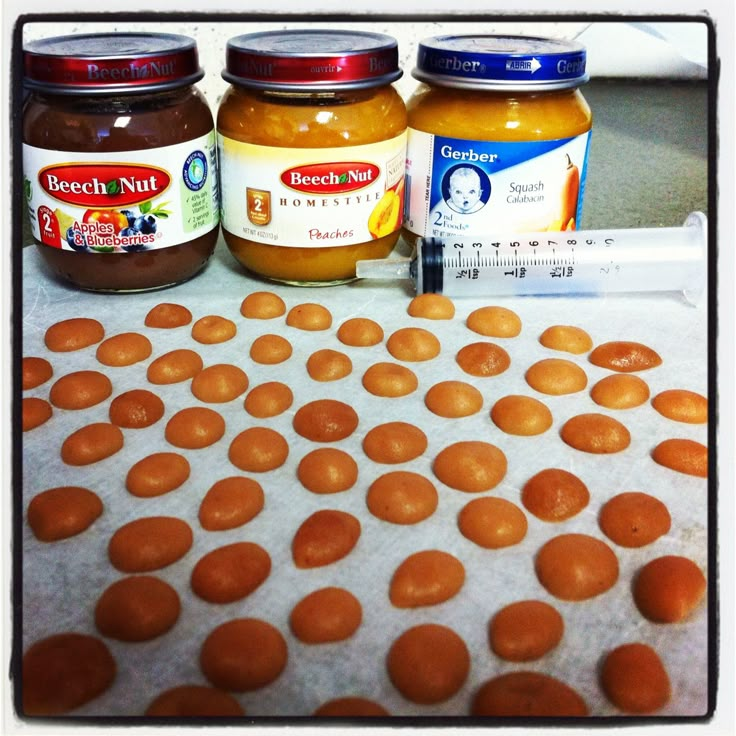 For example, apples.
For example, apples.
Based on popsugar.com
Read also: Teething is not the cause of high fever
Read also: Baby teething: survival guide for parents
Read also: How to choose a pediatrician: what we pay attention to so as not to be mistaken
Teething | STADA
How to tell if your child is teething, when to see a doctor and what you need to know about ways to manage discomfort.
Most babies start teething between the sixth and tenth month, and everyone tolerates it differently. The process may start a little earlier or later, there is nothing to worry about. Usually, by the age of two and a half, a child has all 20 milk teeth.
Sometimes the teeth are cut imperceptibly, in other situations the following symptoms can be observed:
- The gum becomes inflamed and swollen, becomes sensitive to touch;
- Producing more saliva than usual;
- The child becomes capricious and irritable;
- There is a desire to gnaw and chew something hard;
- Child refuses food;
- Having trouble sleeping.

Teething may cause fever, but usually does not exceed 38°C). In addition, diarrhea (loose stools) may occur. These symptoms should be discussed with the pediatrician to rule out infection and other serious causes.
Here are some tips to help manage your child's discomfort:
- Gently rub your face to remove saliva and avoid skin irritation and rashes;
- Let's chew on cool items. This can be a chilled (not frozen!) hard rubber teething ring or a cold apple (if the baby is already eating solid food). Don't buy liquid-filled rings and make sure your child doesn't chew on plastic items that can break;
- Wipe the gum with a clean damp cloth. You can put the napkin in the freezer beforehand;
- Give your child cool food suitable for his age. It can be applesauce or unsweetened yogurt.
OTC drugs may also help. Use ibuprofen or paracetamol as a pain reliever (syrup and suppositories are better for children). Remember that at a temperature, aspirin should not be taken until 19years. Symptoms can also be relieved with gels for teething. They can have anti-inflammatory, anesthetic, antiseptic effects. Avoid products that contain belladonna extract or benzocaine.
Remember that at a temperature, aspirin should not be taken until 19years. Symptoms can also be relieved with gels for teething. They can have anti-inflammatory, anesthetic, antiseptic effects. Avoid products that contain belladonna extract or benzocaine.
The American Dental Association suggests taking care of your teeth as soon as the first one appears. Use a soft toothbrush for children and fluoride toothpaste. The required amount of paste for a child under three years old is about a grain of rice. If the child is from three to six years old, you should focus on the size of a pea.
Cuts, burns and bruises
How to give first aid and when to call a doctor.
Learn more
Headache
What you need to know about the types of headaches, what are the first aid measures and what the doctor can prescribe
Find out more
Frequent urination in men
On average, people urinate six times a day, sometimes one more time at night.